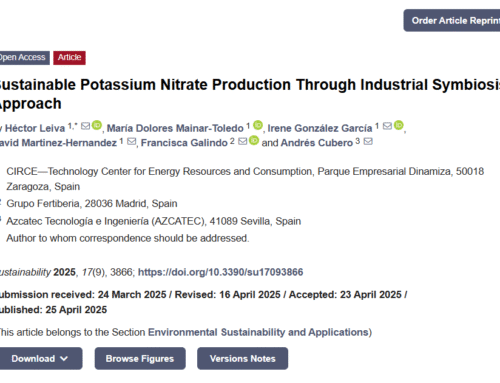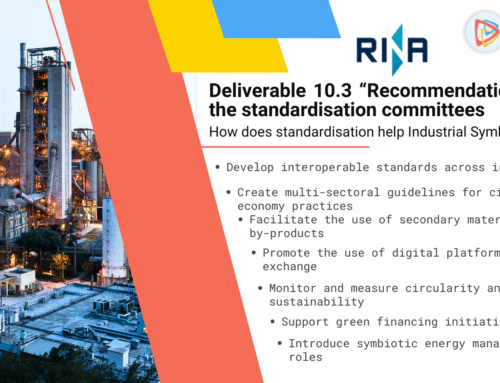WP7 objectives
The main scope of the WP7 is to demonstrate a regional level industrial symbiosis case among cross-sectorial companies in Brescia, enabling the recovery of industrial materials to be used as alternative feedstock and, therefore, decreasing their landfilling. In addition, specific targets are the utilization of waste heat from pyrolysis process, the characterization of the interaction among companies and their involved processes, the implementation of key technologies fundamental for the recovery of metal residues.
WP7 status
The technical feasibility of the reuse and valorisation of the residues generated in the 4 companies of the demo-case has been proved by testing at laboratory and pilot plant scale. Specifically:
- ORI MARTIN industrially produces briquettes with metallic residues. Briquettes are used as inlet material of the EAF. Now, the main used materials for briquettes are turning and shrinkage residues.
- FONDERIA DI TORBOLE, following the good results obtained from the metals recovery from sand blasting operations, decided to design and construct an industrial separator. The metallic part could be used as briquettes constituent in an industrial symbiosis contest, whereas the “purified” sand can be reused in the industrial process.
- FERALPI SIDERURGICA performed pilot plant tests in order to:
1) to produce ferroalloy starting from LF slags and other residues, such as Raffmetal ashes, and
2) to recover metals starting from metal oxides. The starting material is briquetted or collected in suitable boxes and processed in a reducing furnace.
- RAFFMETAL has conducted pyrolysis tests with internal organic residues: the process permits to recover metallic Al, ashes (to be used as briquettes constituent) and thermal heat.
The University of Brescia has realized a model able to evaluate the IS solution and to provide input to the design and engineering phases. The realization of the CORALIS industrial symbiosis in the Brescia district is very complex because it is a process that involves streams of materials, from one side, and of information, from the other side. Six scenarios of industrial symbiosis were analyzed for the demo-site of Brescia. The selected five basic scenarios have used to demonstrate the potentials of individual IS initiatives proposed by the involved companies, i.e., briquetting machine (ORI Martin), separation unit (Fonderia di Torbole), pyrolizer (Raffmetal), and two new furnaces (Feralpi Siderurgica). In addition, a combined scenario covering all above-mentioned initiatives has been analyzed. The impacts expected from the scenarios were measured in terms of the changes in the indicators defined for the demo-site of Brescia in the CORALIS project.
Finally, specific attention has been given to the possible utilization of residual heat at low temperature. This residual heat can be recovered more efficiently for district heating rather than for internal energy needs of the plant. To this end, an updated inventory of the new possibilities of heat recovery has been carried out, exploring the different technological options (as ORC, heat pump and PCMs). Moreover, an assessment has been done on specific heat fluxes in the demo-case to define their valorisation respect to the actual waste. For more details, check out:
D7.1 Characterisation of main by-products, streams and processes in the province of Brescia (CO)
D7.2 ROM for CORALIS platform (CO)
D7.3 Design and Engineering of all equipment and pilot plants (CO)
D7.4 Commissioning of all the equipment and pilot plants (CO)
WP7 next steps
The most important non-technological barrier to be overcome is the obtainment of the suitable authorizations for exchanging materials between partners, for valorising and reusing internally selected wastes and for allowing the creation of a real IS system.
Another point is to optimize the already operative process and to define in details the main parameters for the processes that have been analysed at pilot plant scale.







